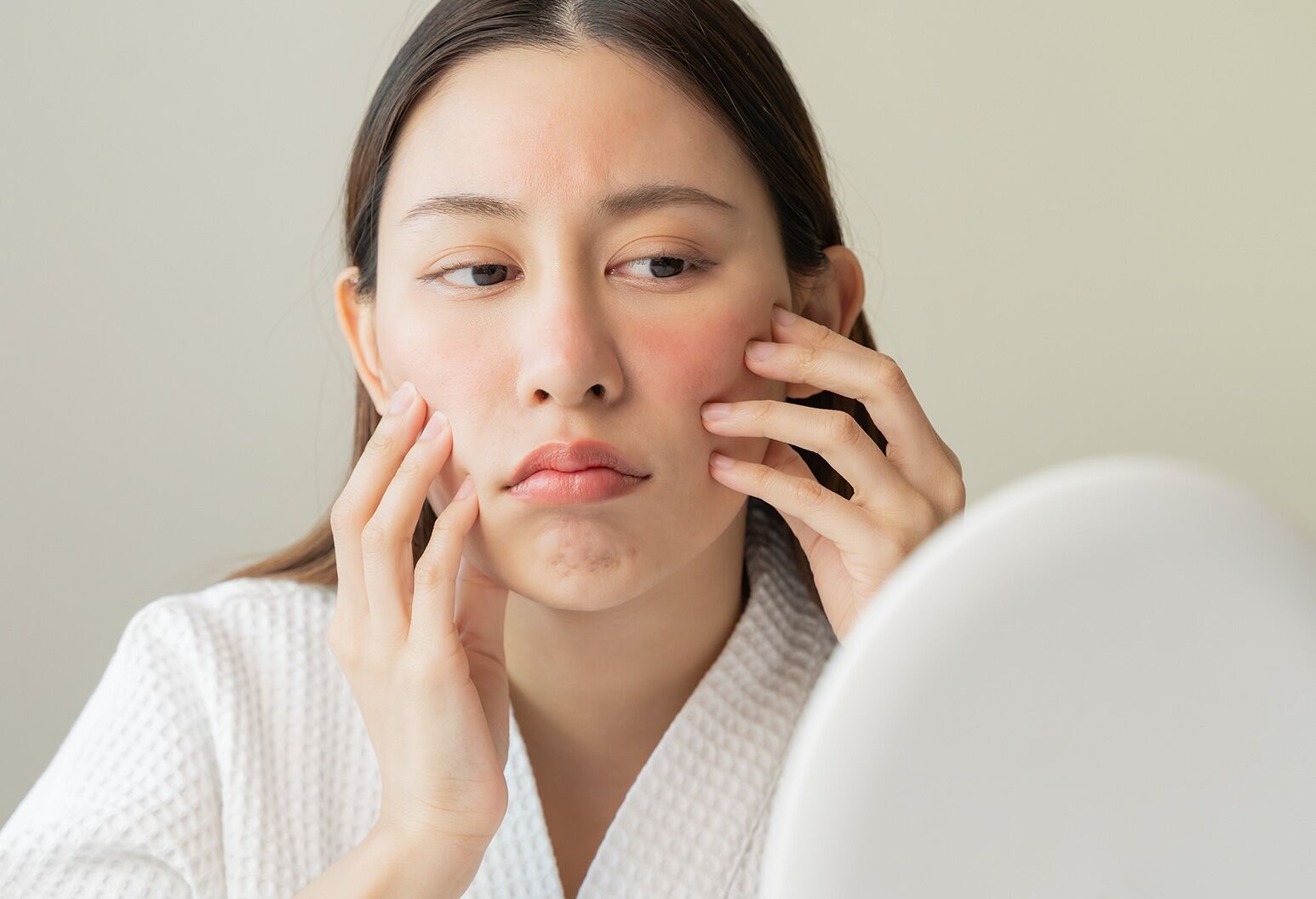
You wake up with new breakouts. Or dryness. Or a glow that wasn’t there yesterday. Your skin listens to what your hormones say, even when you don’t feel the shift. It reflects what’s happening underneath, not just what you apply on top.
The body speaks through skin. And hormones shape the tone, the texture, the clarity. They decide what heals and what lingers.
You think it’s diet, stress, weather. But sometimes, it’s something deeper—something chemical.
Sebum rises when androgens rise
Your skin feels oilier. Pores feel clogged. Sebum rises when androgens rise. Testosterone, DHEA—they push the skin to produce more oil. Not always in balance. Not always on schedule.
This creates the perfect place for bacteria to settle. Inflammation follows. And acne becomes more than a teenage issue—it becomes a hormonal mirror.
You wash more. You exfoliate harder. But the signal started inside.
Estrogen brings calm, but it doesn’t stay constant
Your skin clears, softens, brightens. Then changes again. Estrogen brings calm, but it doesn’t stay constant. It supports collagen. Holds moisture. Reduces redness.
When it dips, the skin shifts. You notice dullness. Fine lines. Dry patches that didn’t exist before. And no product seems to help long-term.
Because your skin is reacting to loss, not neglect.
Progesterone thickens sebum and slows down shedding
Mid-cycle, your skin feels thicker. Less fresh. Progesterone thickens sebum and slows down shedding. It clogs what estrogen once cleared. Traps oil inside.
That’s why breakouts often come after ovulation. Not from bad habits—but from hormonal instructions your skin can’t ignore.
And the cycle repeats, even when you don’t change a thing.
Cortisol inflames, then forgets how to heal
Stress leaves a trace. Not just in the mind. Cortisol inflames, then forgets how to heal. It breaks collagen. Increases oil. Weakens the skin barrier.
Wounds take longer. Redness stays longer. Sensitivity rises. You think it’s an allergy—but it’s often stress in disguise.
And it’s not always visible stress. Sometimes it’s sleep loss. Sometimes it’s worry you don’t name.
Insulin spikes trigger more than sugar cravings
You eat. You crash. You crave. Insulin spikes trigger more than sugar cravings. They trigger breakouts. High insulin tells the ovaries to make more androgens. More oil. More inflammation.
You’re not eating “badly.” But your skin reacts to how your blood sugar moves. And if it moves too sharply, acne often follows.
Balance, not elimination, becomes the missing key.
Thyroid changes show up before the test says so
Your hair thins. Your skin feels rough. Your nails stop growing. Thyroid changes show up before the test says so. Low thyroid slows repair. Slows hydration. Slows everything.
Your face loses glow. Your hands feel cold. Creams sit on top instead of sinking in.
You don’t need a diagnosis to notice these shifts. You just need to trust what your skin is showing you.
Hormonal contraception rewrites your skin’s instructions
You start a new pill. Your skin clears. Or worsens. Hormonal contraception rewrites your skin’s instructions. It calms androgens—or sometimes mimics them.
The change can feel dramatic. Or slow. Either way, it’s chemical. And your skin reflects it without asking for your opinion.
Balance isn’t always better skin. Sometimes, imbalance was what kept things quiet.
Menopause dries what once felt balanced
You moisturize more. But the dryness returns. Menopause dries what once felt balanced. Estrogen falls. Collagen thins. Hydration escapes faster than you can replace it.
Skin becomes fragile. More reactive. Less forgiving. The products you used to love no longer work the same.
And it’s not age—it’s a message from within.
Your skin isn’t random—it’s responsive
It flares when you’re anxious. Glows when you’re rested. Dulls when you’re low. Your skin isn’t random—it’s responsive. It tracks your hormones better than most blood tests.
You don’t need perfect balance. You need awareness. Enough to ask why before you buy.
Because healing sometimes means understanding what your skin was told to do.
